“How can the coordinated activity of brain cells (neurons) support cognitive functions such as memory, inference and planning that are central to our mental lives?
My research aims to shed light on these questions, using functional brain imaging (e.g. fMRI, MEG, PET), pharmacological manipulations (drug studies), and diverse quantitative analysis tools including computational modelling of human behaviour (e.g. reinforcement learning), supervised/unsupervised machine learning algorithms (e.g. multivariate decoding, clustering), and natural language processing (NLP).
I believe that an improved knowledge of brain function, and how it relates to cognition, will not only help us understand and treat a wide variety of neuropsychiatric disorders, but will additionally yield deep insights into the workings of the human mind and how it relates to external reality.
My work has been funded and recognised by competitive fellowships from several major UK funding bodies, including Wellcome Trust, Medical Research Council (MRC), and National Institute for Health Research (NIHR).
I currently hold appointments at University of Oxford (Department of Psychiatry), University College London (Max Planck UCL Centre for Computational Psychiatry and Ageing Research), King’s College London (Institute of Psychiatry Psychology & Neuroscience), and the NHS.“
Click here for a full list of publications and press coverage.
Probing mental trajectories in semantic spaces using deep language models
Much of human cognition is underpinned by how the brain represents relationships between entities in the world. Semantic relationships, in particular, play a central role not only in metaphorical (or analogical) reasoning and complex inferences, but also in cognitive distortions described in psychiatric disorders.
I am developing new computational tools to probe abstract semantic representations in humans performing naturalistic tasks. I will then use these tools will shed light on therapeutically-relevant cognitive mechanisms in psychiatric populations.
I discussed some of these approaches on The Guardian’s Science Weekly podcast in October 2023, and it has been fetured in The Times and i newspapers, and the AI at Oxford page.
Examples of this work:
- Trajectories in semantic spaces in schizophrenia (PNAS, 2023)
- Theory-driven analysis of thought disorder using generative language modelling (BPCNNI, 2023)
- Natural language Processing in Psychiatry: a field at an inflection point (Biol Psychiatry CNNI 2023)
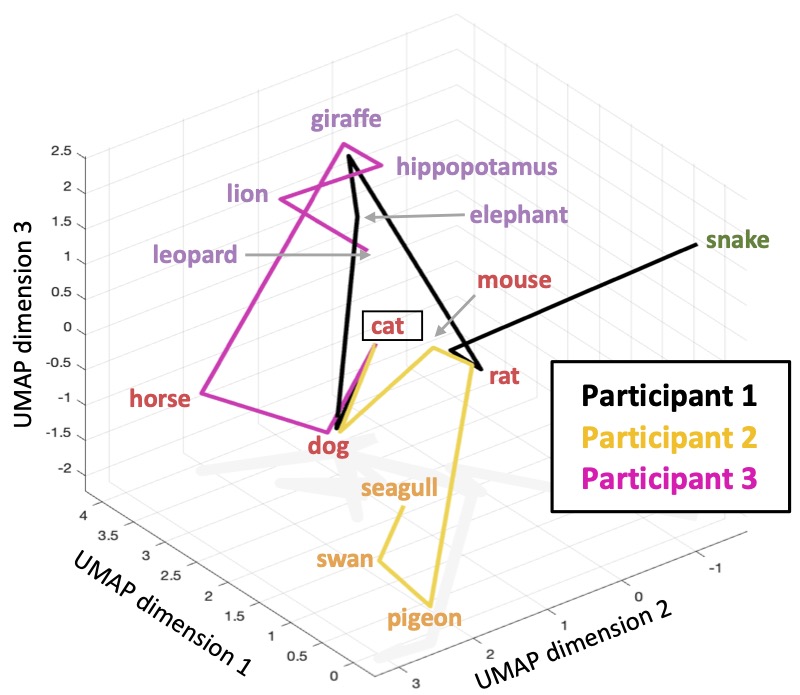
General approach: Semantic space embedding followed by dimensionality reduction for visualisation purposes.
Using pre-trained deep language models (e.g., GPT), combined with behavioural experiments and functional neuroimaging (MEG and human intracranial recordings), my current work investigates:
- the cognitive and neural mechanisms underlying how the brain represents abstract ‘semantic’ spaces
- the dynamics governing how thoughts unfold in time as ‘trajectories in semantic space’.
- how these neural and behavioural phenomena vary as a function of task goal and clinical state, with a focus on psychosis spectrum disorders
- whether these methods might be used as prognostic or treatment biomarkers in neuropsychiatry.
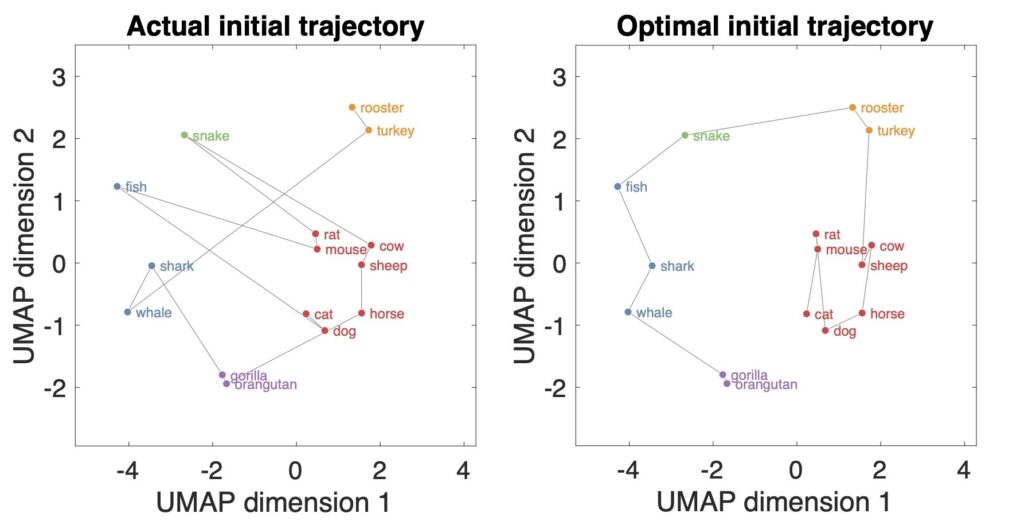
Probing the tortuousity of trajectories through ‘semantic spaces’ in clinical populations, using deep language models.
Building mental maps of the world
My doctoral research investigated how the brain learns and represents concepts and events in a structured manner (in so-called ‘cognitive maps‘), which help us make sense of the world around us, and infer likely future scenarios that we have not directly observed. I am interested in how this process may go awry in psychiatric conditions such as schizophrenia.
I focused on the role of spontaneous memory reactivations (replay) during periods of rest (e.g. mind wandering), detected using magnetoencephalography (MEG) and multivariate decoding analysis.
This research was conducted at the Max Planck UCL Centre for Computational Psychiatry and Ageing, part of the Wellcome Centre for Human Neuroimaging. My primary supervisors are Professor Ray Dolan FRS (UCL), and Prof Zeb Kurth-Nelson (DeepMind). I am funded by a Wellcome Trust flagship doctoral fellowship for clinicians.
I presented an outline of this research programme at the Society of Biological Psychiatry, Computational Psychiatry Satellite meeting. Here is a recording.
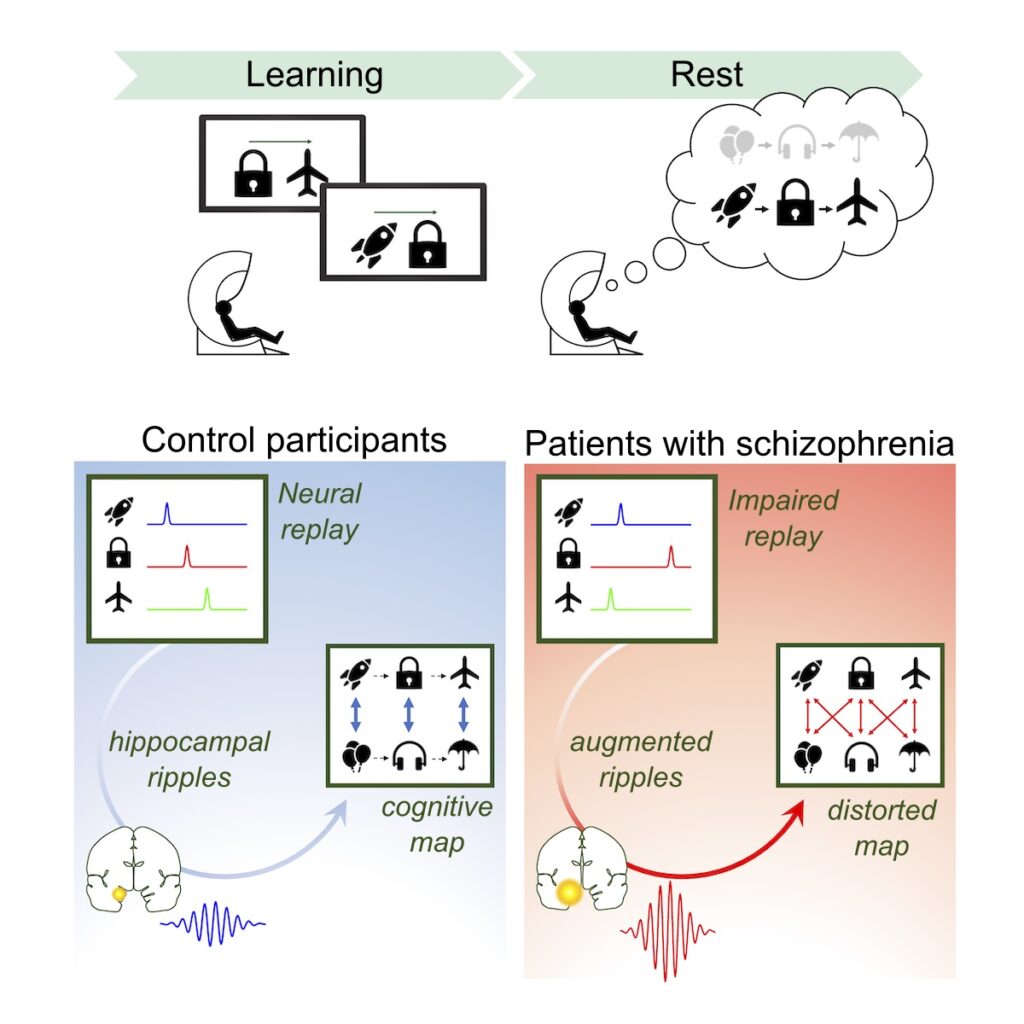
Patients with schizophrenia have a reduced brain signal for spontaneous memory replay of learned sequences during an awake resting session (measured with magneto-encephalography (MEG) brain imaging). Control participants, by contrast, show a strong signal for fast (<1 second) replay. Original article (methodology outlined in figure below).
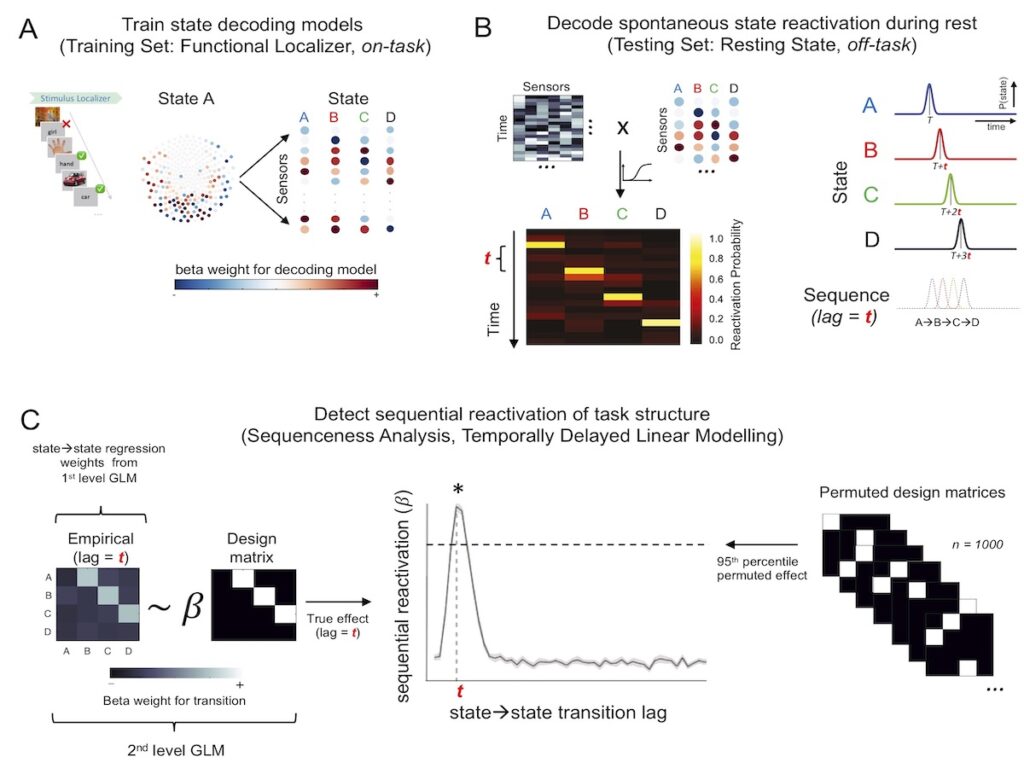
Decoding representational content from intrinsic brain activity using non-invasive functional neuro-imaging (MEG) and multivariate decoding analysis, in combination with lagged multiple linear regression. Full description of methodology here, and its application to our recent clinical neuroscience study here.
The role of dopamine in forming beliefs
The majority of my previous research has focussed on how the neurotransmitter dopamine modulates the function of brain circuits involved in cognition and memory, and how this might help us understand and treat psychiatric disorders such as schizophrenia. In particular, I investigated the brain circuits involved when a person updates their beliefs about the world in light of new evidence, and how such behaviour accords with predictions from Bayesian probability theory.
Access peer-reviewed scientific articles here.
I conducted this work while a Clinical Research Fellow in Psychiatry at Imperial College London and King’s College London, in the research lab of Professor Oliver Howes.
Here is a small selection of this work:
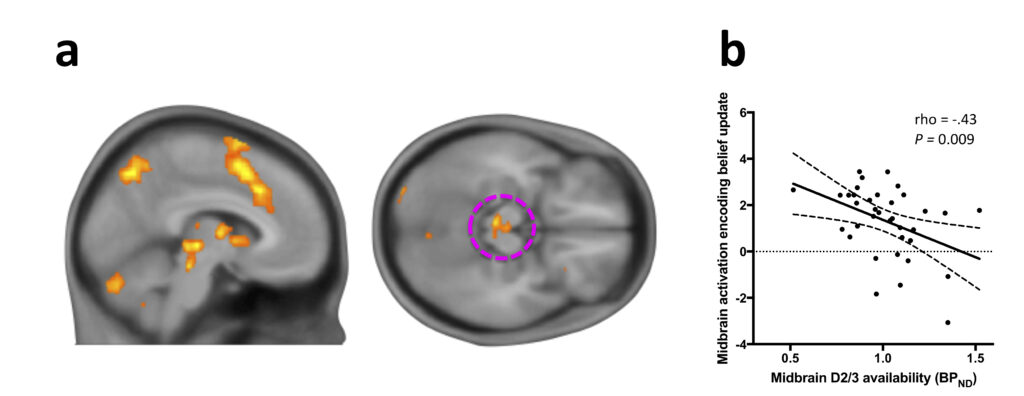
(a) Neural activation in dopamine-rich brain regions at at timepoints when participants updated their beliefs, following surprising (disconfirmatory) evidence (fMRI). (b) Activity in these brain regions relates to a measure of dopamine receptor density measured with [PHNO] PET. Original article.

(ii) Brain network associated with dopamine synthesis capacity, [FDOPA] PET. (iii) Network associated with amphetamine-induced dopamine release capacity, [PHNO] PET. These brain regions are typically activated following the perception of salient events. Original article.

Increased dopamine synthesis capacity in patients with bipolar affective disorder (presenting with psychotic symptoms, such as delusions and hallucinations), measured with [FDOPA] PET. Original article.
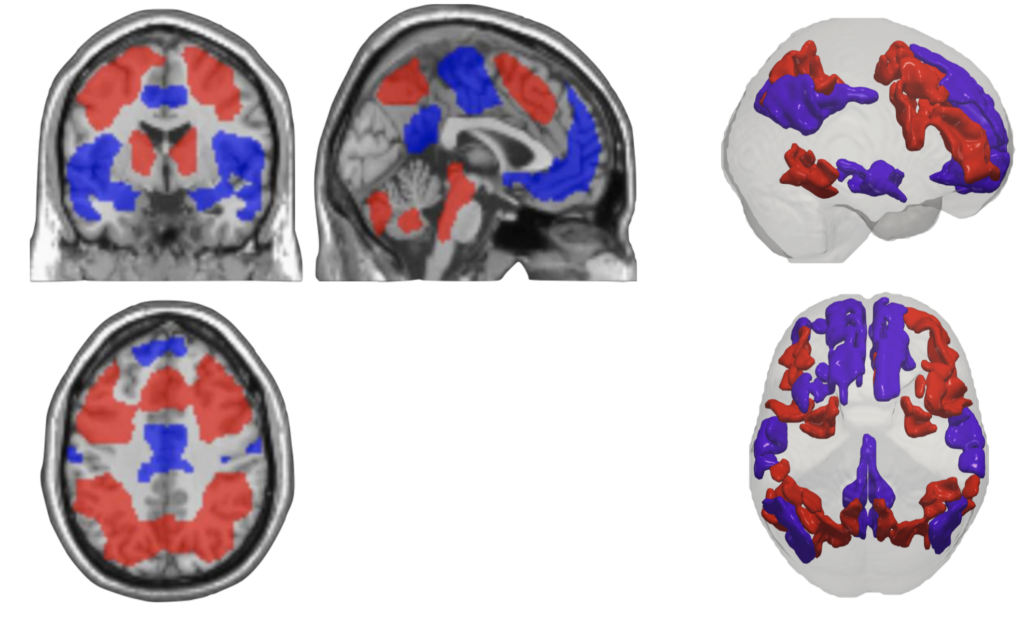
We find a close relationship between brain dopamine levels and brain regions which are activated (red) and de-activated (blue) during a memory task (fMRI). Original article.
Psychedelics, consciousness and wellbeing
I am fascinated by the relationship between brain and mind, and in particular in the brain-basis of consciousness. The profound alterations in consciousness caused by psychedelic drugs such as LSD, DMT and psilocybin represent a powerful means of studying this relationship.
Here are some of my research papers on psychedelics, particularly focussing on how they perturb the experience of ‘self’ (the sense of ‘I’). This research was done in collaboration with Dr Robin Carhart Harris and colleagues at the Imperial College Centre for Psychedelic Research.
Access peer-reviewed scientific articles here.
Here is a PDF of the Ego Dissolution Inventory (EDI) questionnaire from the Frontiers in Neuroscience paper.
Here’s a talk I gave on this topic at the ICPR in 2016.